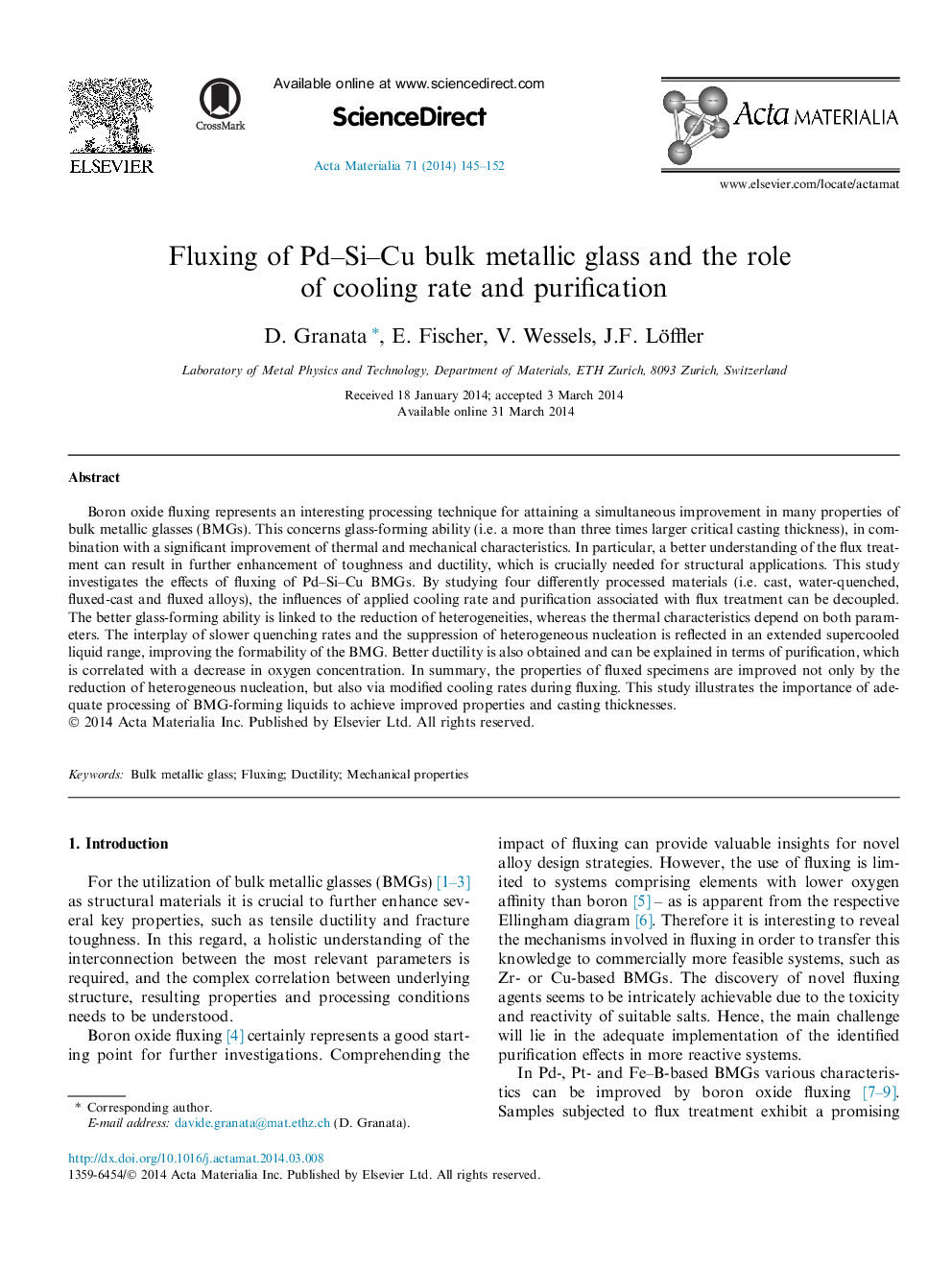| Article ID | Journal | Published Year | Pages | File Type |
|---|---|---|---|---|
| 1445695 | Acta Materialia | 2014 | 8 Pages |
Boron oxide fluxing represents an interesting processing technique for attaining a simultaneous improvement in many properties of bulk metallic glasses (BMGs). This concerns glass-forming ability (i.e. a more than three times larger critical casting thickness), in combination with a significant improvement of thermal and mechanical characteristics. In particular, a better understanding of the flux treatment can result in further enhancement of toughness and ductility, which is crucially needed for structural applications. This study investigates the effects of fluxing of Pd–Si–Cu BMGs. By studying four differently processed materials (i.e. cast, water-quenched, fluxed-cast and fluxed alloys), the influences of applied cooling rate and purification associated with flux treatment can be decoupled. The better glass-forming ability is linked to the reduction of heterogeneities, whereas the thermal characteristics depend on both parameters. The interplay of slower quenching rates and the suppression of heterogeneous nucleation is reflected in an extended supercooled liquid range, improving the formability of the BMG. Better ductility is also obtained and can be explained in terms of purification, which is correlated with a decrease in oxygen concentration. In summary, the properties of fluxed specimens are improved not only by the reduction of heterogeneous nucleation, but also via modified cooling rates during fluxing. This study illustrates the importance of adequate processing of BMG-forming liquids to achieve improved properties and casting thicknesses.
